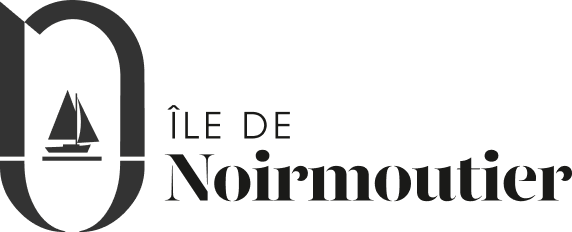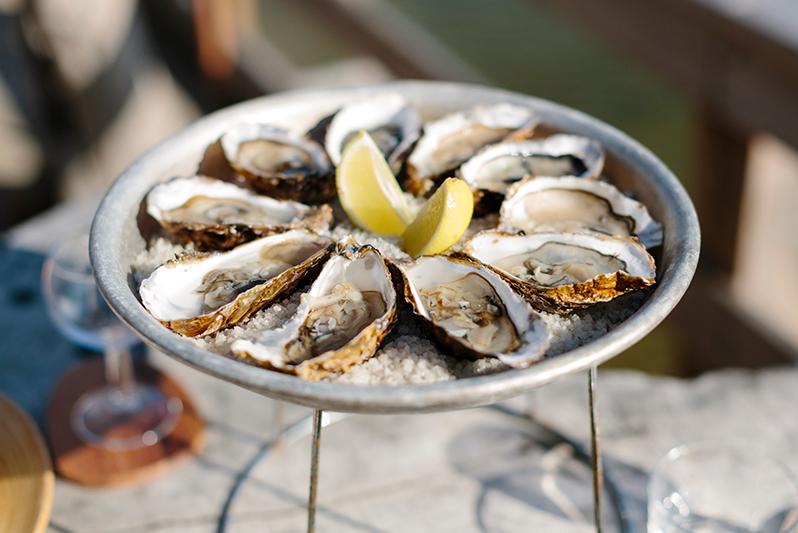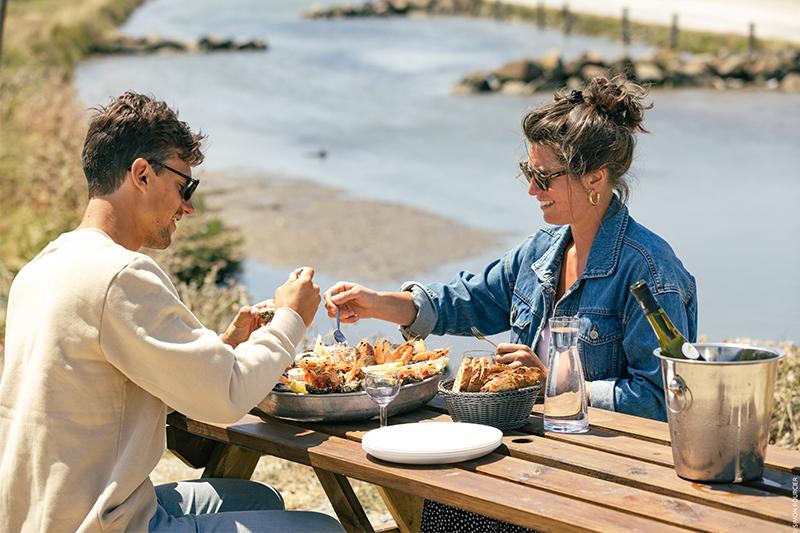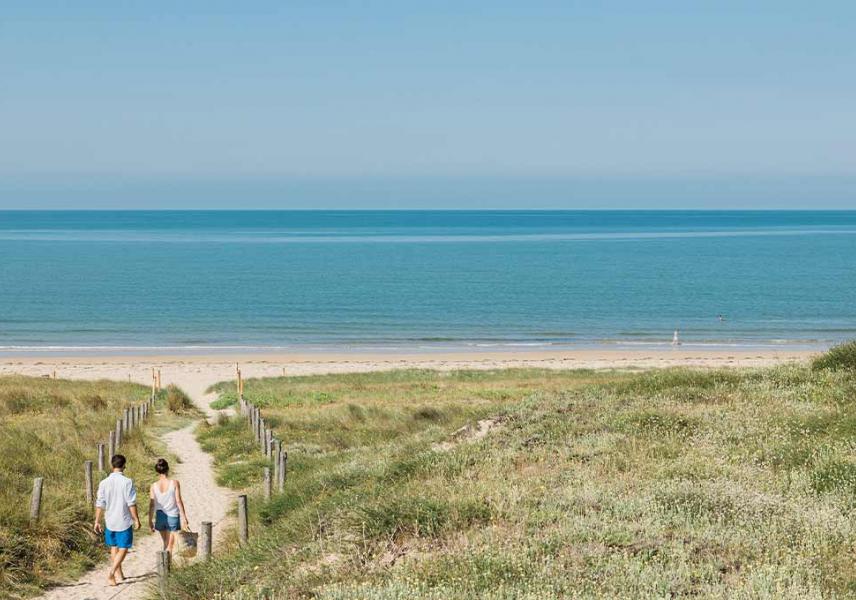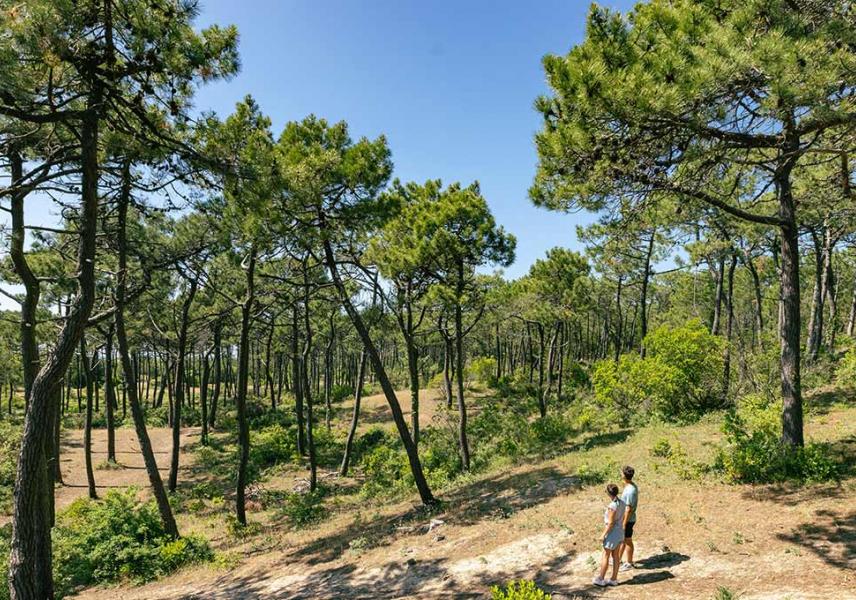
The Bonhomme
oyster port
Oysters and shellfish from the island of Noirmoutier
Dawn barely breaks before the slipway at Bonhomme Port begins to hum with the coming and going of tractors hauling flat-bottomed boats to the oyster farms just uncovered by the tide. Despite its unbeatable view of the town of Noirmoutier-en-l’Île, this miniature port on Bourgneuf Bay, would almost go unnoticed if it weren’t the island’s main oyster port.
AN OYSTER PORT
The Bonhomme oyster port is located on Bourgneuf Bay in La Guérinière. This is the narrowest part of Noirmoutier Island: just 500 metres separate Bourgneuf Bay from the waters of the Atlantic Ocean.
Bonhomme Port comprises a handful of oyster huts, some of which have become retail and tasting spaces, a slipway to the sea, and a cycling trail along the dyke, all of which is punctuated by the comings and goings of flat-bottomed boats called plates or lasses. This site only contains a small portion of the island’s oyster and mussel farmers; many other “huts” have been built in the polder.
In particular, this port gives professionals access to their oyster beds in Bourgneuf Bay. At high tide, you’ll have to imagine these underwater fields: countless rows of beds where bags containing oysters at different stages of maturity are arrayed. The slipway is strictly reserved for use by professionals, but if you climb to the top of the dyke, you can enjoy a lovely view of the entrance to Noirmoutier Port, the château and the church and, father to the north, the Plage des Sableaux beach dotted with beach huts. Lastly, straight ahead, you can spot the Dames Lighthouse which towers above the edges of the Bois de la Chaise wood.

Port du Bonhomme - Quentin Boulegon

OYSTER FARMING...
Oyster farmers access their beds on lasses, flat-bottomed boats that are towed to the edge of the water. They regularly shake the bags of oysters, flipping them over to ensure even growth.
When the oysters become too cramped, they bring them back to land, to sort and separate them. They then put them in bags with wider mesh, this time with fewer oysters per bag.
They finish growing in fattening ponds full of seawater where their flesh plumps up, their taste becomes more refined, and they sometimes take on an emerald green hue thanks to microscopic algae.
It takes almost three years of work for an oyster to reach full maturity.

... AND MUSSEL FARMING
The famous bouchot mussels are also produced off the coast of Noirmoutier Island, on both the Atlantic and Bourgneuf Bay sides.
The mussel spat (spawn) is collected on lines near the coast in the early springtime.
They are then arranged on wooden frames through the end of the summer.
In September, the lines are rolled into spirals on piles embedded in the sea, called “bouchots”. The mussels then grow all winter and the following spring.
They are harvested mechanically, using a sort of tube called a “sock” which is attached to the boat and lowered down along the bouchot.
TIPS FOR PREPARING AND ENJOYING OYSTERS
Like with wine, oysters will be different from one year to the next. For example, the taste of iodine may be lessened by heavy rainfall. To take full advantage of their flavour, they should be opened an hour before eating and drained of the “first water” in the shell. The oysters will later release a second, less overpowering water. To retain their full delicacy, don’t place them in the refrigerator or on a bed of ice.
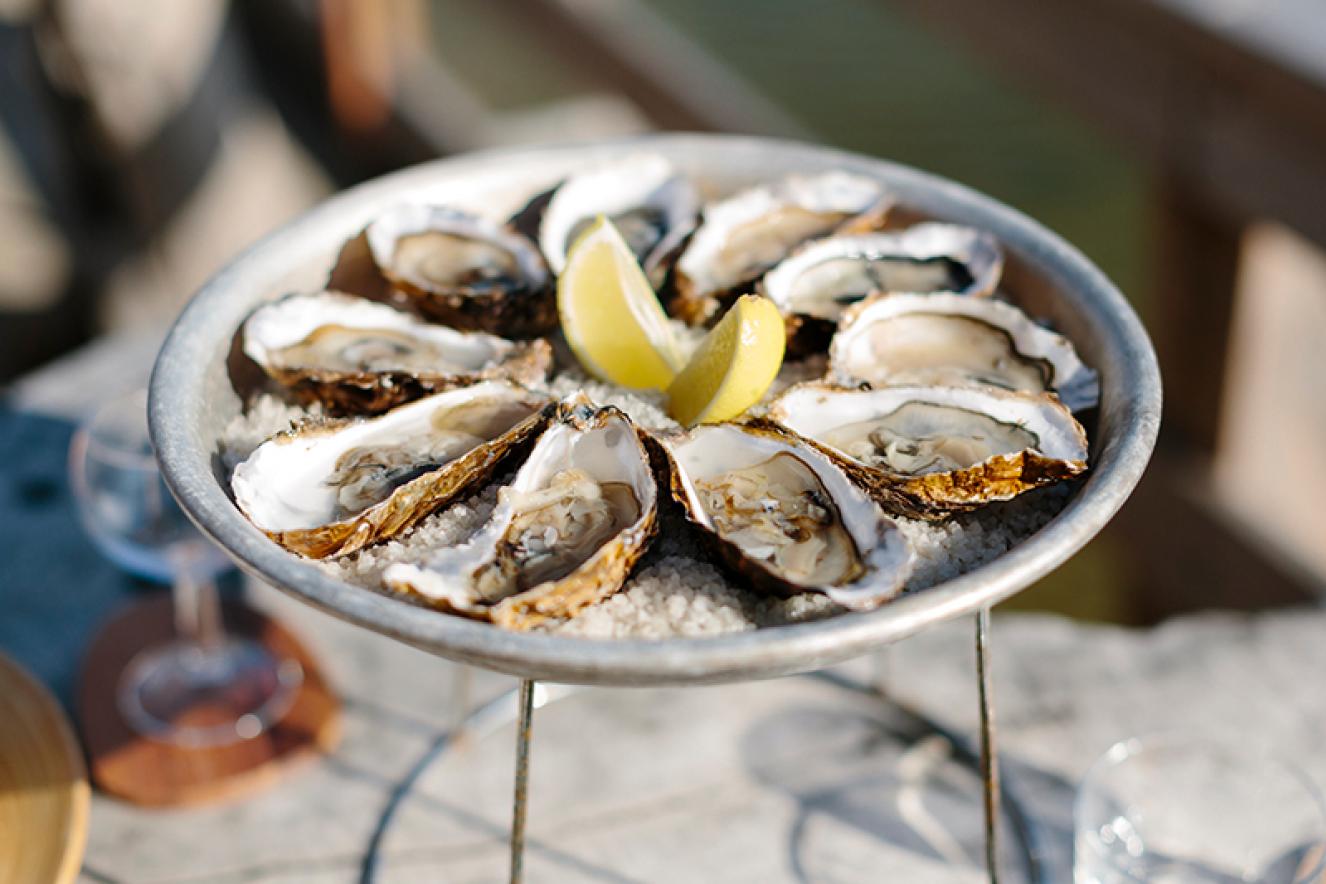
Noirmoutier Island's oysters - Trendz

Oyster farms ©Quentin Boulegon
LA GUÉRINIÈRE BY BICYCLE: "A BONHOMME UNLIKE ANY OTHER"
On the east coast of Noirmoutier Island, in La Guérinière, Bonhomme Port is a highly appreciated stopping point along the cycling trail.
When you reach the oyster port, you’ll need to pedal harder to pass over the dyke to the slipway. There, you will find oyster beds as far as the eye can see in Bourgneuf Bay with, in the background, the château and the church in Noirmoutier. Hop off to sample some oysters in one of the huts along the port.
Laid out at the base of the dyke, the cycling trail allows you to travel through picture postcard scenery. As you enjoy the beneficial marine fragrances from the bay, you will discover the criss-crosses of seawater flowing through the Sébastopol Polder, alternating with the bumps and furrows of potato farming. The cycling trail continues all the way to the Gois Passage. You’ll be ready for a break to catch your breath. Less adventurous visitors can choose to return by the same path, whilst others will opt to cross the four-lane road to head towards Barbâtre and its superb beach. They will then follow the path along the edges of the Tresson Dunes, before crossing back over at the Bonhomme roundabout.
